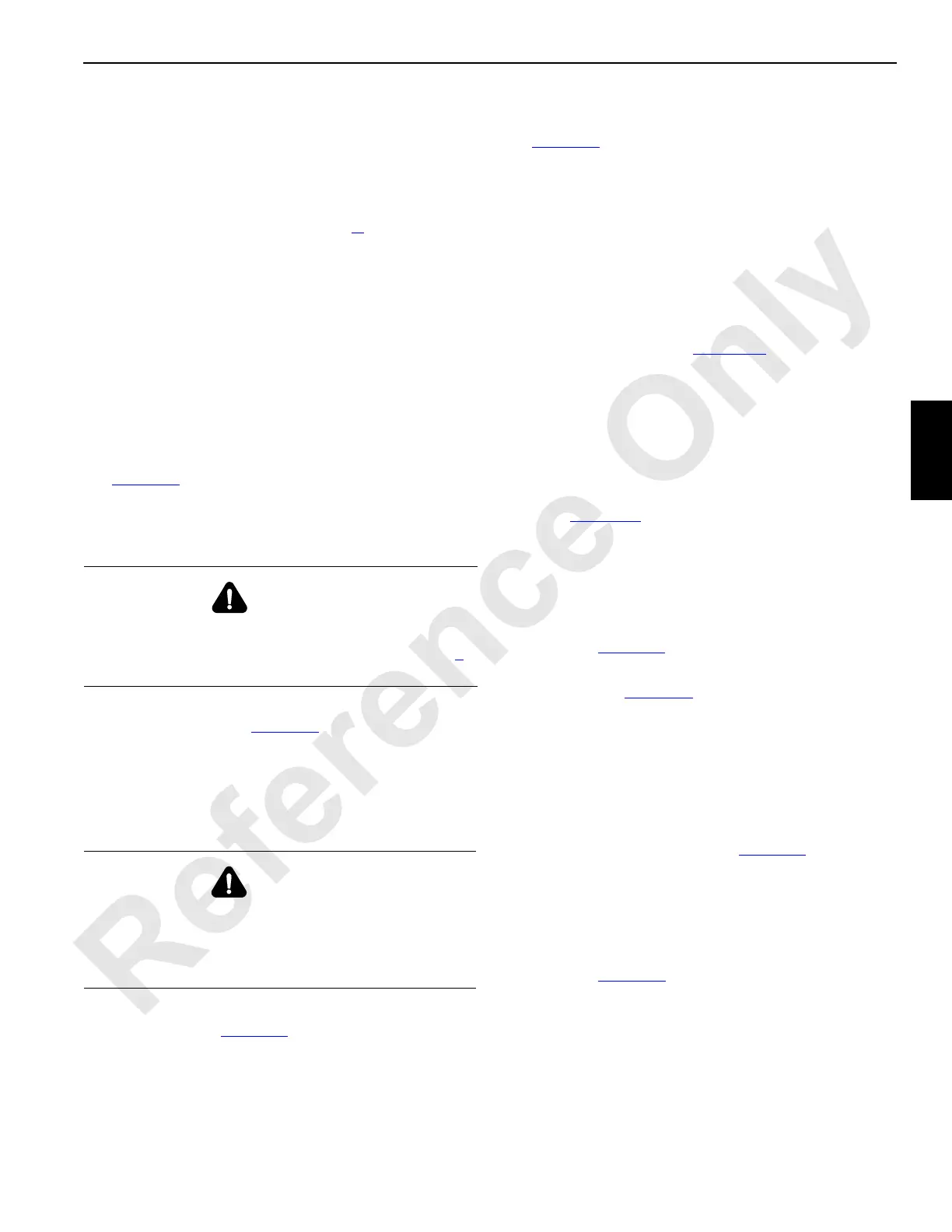Manitowoc Published 11-06-15, Control # 040-13 4-7
2250 SERVICE/MAINTENANCE MANUAL BOOM
Maintenance
1. Weekly, check air cylinders and piping for air leaks.
2. Quarterly, squirt a few drops of light engine oil into inlet
port of each air cylinder.
3. It will be necessary to exhaust the air from the cylinders
before performing Maintenance step 2.
To exhaust the air, lower the boom stop to the
SHIPPING position (see procedure which follows). Then
crack open the air line at each check valve to exhaust
the air from the boom stop cylinders.
Lowering Boom Stop to Shipping Position
1. Lower boom onto blocking at ground level.
2. Keep the engine running to ensure that there is sufficient
air pressure to fully extend strut cylinders.
3. Remove quick-release pin from both strut supports and
rotate supports to shipping position as shown in
Figure 4-5
.
4. Reinstall quick-release pins in strut supports.
5. Stop the engine.
6. Disconnect socket from plug in air supply line near right
side boom hinge pin (Figure 4-5
, View C)
Socket will block supply air. Air pressure in lines and
cylinders exhaust through plug.
Raising Boom Stop to Working Position
1. Connect socket to plug in air supply line near right side
boom hinge pin (Figure 4-5
, View C).
2. Start the engine. Strut cylinders will extend to raise boom
stop tubes as air pressure is supplied.
3. Remove quick-release pin from both strut supports and
rotate supports to working position as shown in
Figure 4-5
.
4. Reinstall quick-release pins to lock struts in position.
Adjustments
The physical boom stop was adjusted at the factory and
does not require periodic adjustment. The following items
must be checked and adjusted at assembly, however, if the
boom stop is disassembled for repair or parts replacement.
Boom Stop Rod Ends
Each boom stop rod end (Figure 4-5, View B) must be
threaded all the way onto the cylinder rod so the rod end is
snug against the shoulder on the rod. Be sure to install rod
guides. They keep the rod ends in proper alignment.
Boom Stop Engagement
Watch the boom stop rod ends while slowly raising the boom
butt. Both rod ends must engage the boom stop pins in the
rotating bed at the same time and at the approximate point
shown in Figure 4-5
, View B. Adjust the rod end for each
strut cylinder to provide proper engagement.
Boom Stop Compression
Watch the boom stop rod ends while slowly raising the boom
butt. With the boom butt at 90
° both rod ends should be
bottomed out against the cylinders to within 1/8 in (3,2 mm)
of each other (Figure 4-5
, View D).
Install U-shaped spacers between the cylinder flanges and
boom stop tubes (Figure 4-5
, View D) to limit the maximum
angle to 90
° and to bottom out the rod ends to within 1/8 in
(3,2 mm) of each other.
ANGLE INDICATOR ADJUSTMENT
General
An angle sending unit is mounted on the boom butt and, if
equipped, on the luffing jib butt (see Figure 4-6
).
Each sending unit houses a pendulum-type potentiometer
which sends an electric signal to the crane’s programmable
controller. The programmable controller converts the electric
signal into an angle which can be monitored on the digital
display in the operator’s cab.
Three angles (Figure 4-7
) can be monitored:
• Boom angle
• Luffing jib angle
• Boom to luffing jib angle
WARNING
Crushing Injury Hazard!
Stand clear of boom stop tubes while performing step 6.
Strut cylinders will retract as air pressure exhausts.
WARNING
Crushing Injury Hazard!
Stand clear of boom stop tubes while performing steps 1
and 2. Strut cylinders will extend as air pressure is
supplied.

